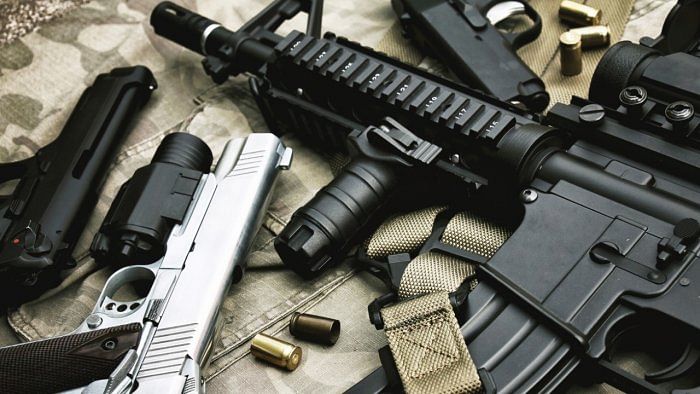
When US forces exited Afghanistan in August 2021, they left behind a significant cache of military equipment, including small arms, ammunition, armoured vehicles, and sophisticated surveillance technology. Representative image
Credit: iStock Photo
Srinagar: In a concerning development, intelligence reports indicate that advanced weaponry left behind by the US Army in Afghanistan after their 2021 withdrawal is being funnelled into Jammu and Kashmir through Pakistan. This revelation has heightened security concerns in an already volatile region.
Last week, officials reported that terrorists were found using American-made M4 carbine assault rifles during a terror attack at Badnoti near Machedi in the Billawar area of Kathua district. Similar weaponry has been used in previous gun battles in Doda, Poonch, and Rajouri.
Central intelligence agencies had previously indicated that the logistics, arms, and ammunition used in the Poonch terror attack last year, which resulted in the death of five soldiers, originated from Taliban-ruled Afghanistan.
Investigations also suggested that the bullets used in the Poonch attack were from Afghanistan, left behind by US forces post-withdrawal. Security forces have often recovered sophisticated weapons beyond just AK-47s from slain terrorists.
When US forces exited Afghanistan in August 2021, they left behind a significant cache of military equipment, including small arms, ammunition, armoured vehicles, and sophisticated surveillance technology. Despite efforts to disable some advanced equipment, a substantial amount of functional weaponry fell into Taliban hands.
Recent intelligence intercepts and ground reports indicate that these weapons are being smuggled across the porous Afghanistan-Pakistan border and then funnelled into Jammu and Kashmir. This could significantly escalate the capabilities of militant groups operating in the region.
“The potential influx of advanced weaponry poses a serious threat to both military and civilian targets. Security forces, already engaged in a prolonged counter-insurgency operation, now face the prospect of terrorists armed with more sophisticated and lethal equipment,” a senior police officer involved in counter-insurgency operations told DH.
He added that this development could lead to an increase in the frequency and intensity of attacks, further challenging the region's fragile stability.